1964 Quarter Coin Value: How Much Is It Worth?
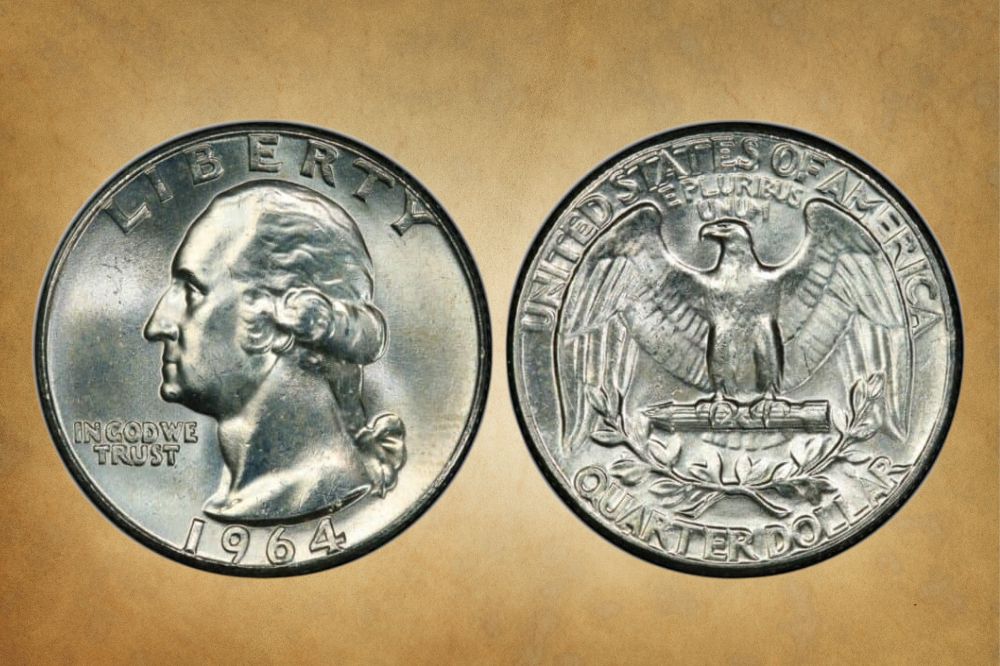
1964 marks an important milestone in American coinage. It was the last year of the true silver quarter. Since then, the coins struck for circulation have been made of copper and nickel.
So for the 1964 quarter, value is an interesting question. Are all these coins collectable because of their place in numismatic history? Or are some coins more valuable than others?
Let’s take a look and find out!
1964 Quarter Value Chart |
||||
| Type | Circulated – XF45 | MS63 | MS65 | MS67 |
| 1964 Quarter Regular Strike Value | $6 | $14 | $36 | $675 |
| 1964 D Quarter Regular Strike Value | $6 | $14 | $30 | $450 |
| 1964 Quarter Double Die Obverse Value | $22 | $80 | $575 | None |
| 1964 Quarter Double Die Reverse FS-801 Value | $50 | $200 | $2,000 | None |
| 1964 Quarter Double Die Reverse FS-802 Value | $45 | $300 | $1,000 | None |
| 1964 Quarter Double Die Reverse FS-803 Value | $40 | $110 | $650 | None |
| 1964 Quarter Double Die Reverse FS-804 Value | $120 | $400 | $1,000 | None |
| 1964 Quarter Type B Reverse Value | $20 | $26 | $110 | ?* |
| 1964 (S) Quarter Special Mint Set Value | None | SP63 – $1,500 | SP65 – $6250 | SP67 – $13,000 |
| 1964 (S) Quarter Proof Value | None | PR63 – $10 | PR65 – $15 | PR67 – $26 |
*Only one 1964 quarter type B reverse is known to exist graded at MS67. There’s no sale information on the coin, and independent coin grading service the PCGS has not estimated its value.
1964 Quarter Value Guides
1964 Quarter, Regular Strike Value
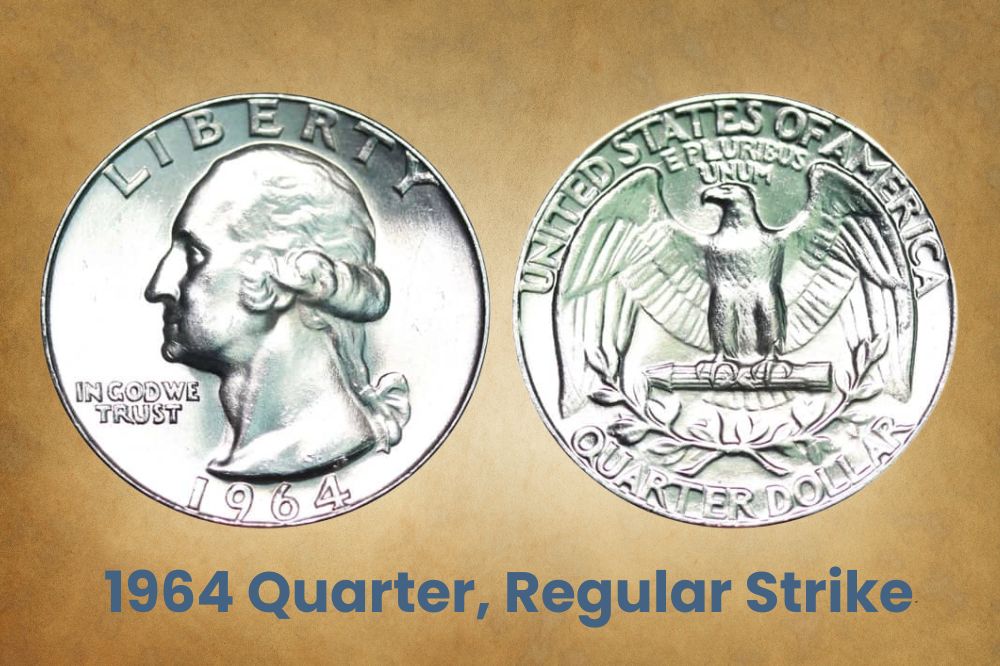
1964 quarters without a mint mark were struck in Philadelphia. They are slightly rarer than the Denver coins: 560 million coins emerged from the Philadelphia presses, compared to over 704 million from Denver.
The high mintage means that finding coins in circulated grades isn’t difficult. But in mint state, they’re less common. An extremely fine 1964 quarter is worth about $6. But prices rise steeply through the gem grades. An MS65 coin is worth about $36, while at MS67, that value rises to $675.
The highest graded Philadelphia 1964 quarters known to exist are those graded MS67+. The PCGS have graded a dozen at that level. And they’re worth around $3,750 a pop.
1964 D Quarter, Regular Strike Value
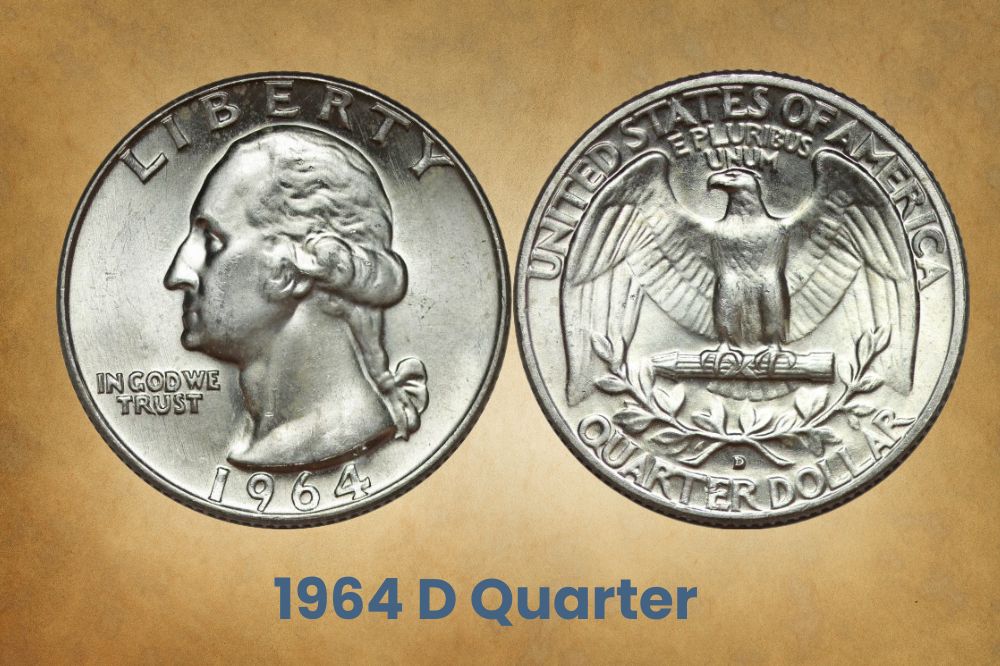
The Denver quarter, as we’ve seen, was minted in slightly highly numbers than its Philly counterpart. And values are modest unless you’ve got a coin that’s of excellent quality and condition.
Circulated coins will fetch about $6 if they’re extremely fine. At MS63, that value is about $30. But an MS67 coin is worth about $450 and an MS67 coin $450.
The PCGS have graded 20 coins at MS67+, and they’re worth $1,750 apiece. But the finest known specimens in existence are two 1964 D quarters graded MS68. Those have come to auction twice in recent years, in 2019 and 2021. The sale prices were $27,025 and $38,400 respectively.
1964 (S) Quarter, Proof Value
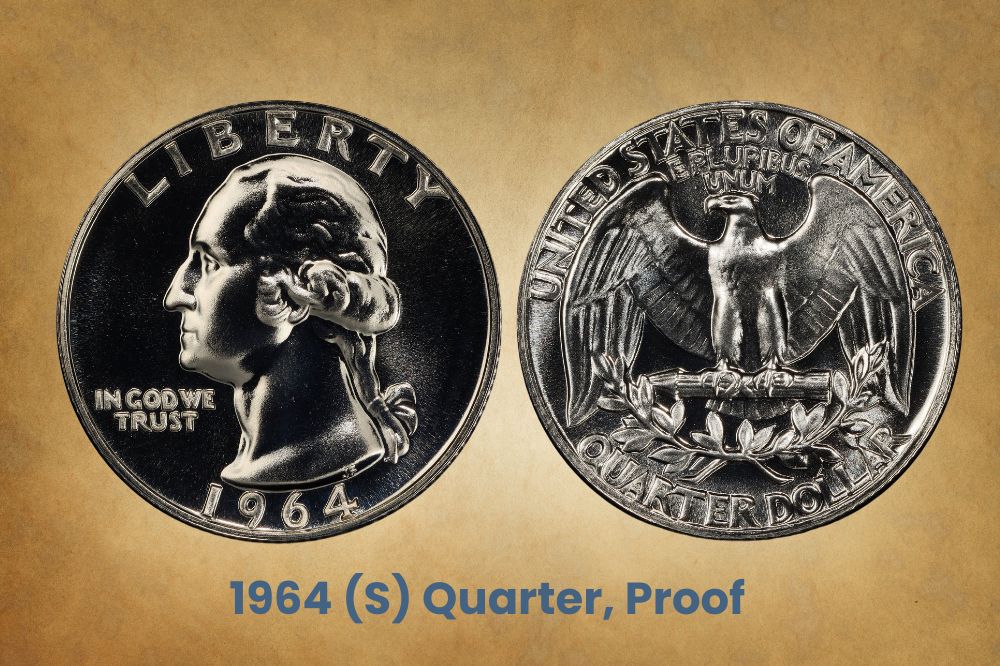
While the San Francisco mint didn’t strike any quarters for circulation in 1964, it did strike proof coins. Like the Philadelphia coins, the proofs don’t have a mint mark. They were destined for collectors, and almost 4 million of them were struck.
As a result, they’re still easy to find today, and prices are relatively modest. You can pick up a proof graded PR63 for about $10. And even coins graded PR67 can be bought for less than $30.
There is, though, a big jump in value for coins with a perfect PR70 grading. They command a price of about $1,150. And a coin graded PR69 and designated a “deep cameo” is worth around $750.
1964 Quarter, Special Mint Set Value
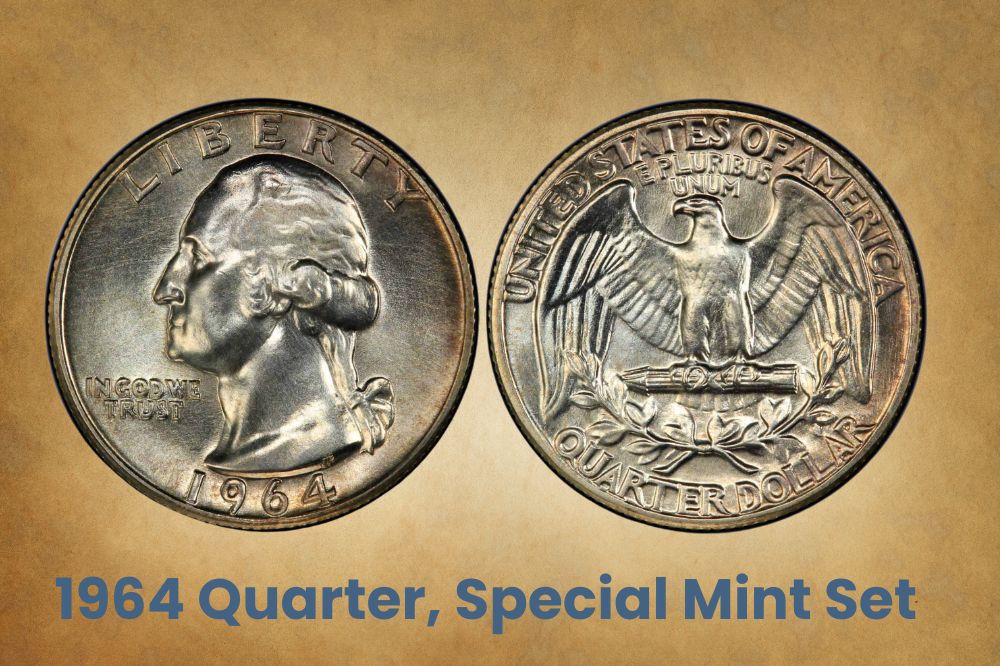
The mint produced no proof sets of coins from 1965 to 1967, instead offering what it called a “Special Mint Set”. These included a coin of each denomination produced that year in the San Francisco mint facility.
The coins from 1965 to 1967 replaced proof and mint state sets for those years. But a Special Mint Set was also produced in 1964. No-one knows why, or exactly how many sets were produced. But estimates of numbers vary from just 20 to 50.
A 1964 quarter from a Special Mint Set will have a satin finish. It will be worth around $1,500 at SP63, and an astonishing $25,000 at SP68.
Related Posts: 17 Most Valuable Modern Quarters Worth Money
1964 Quarter Errors
1964 Quarter, Double Die Obverse
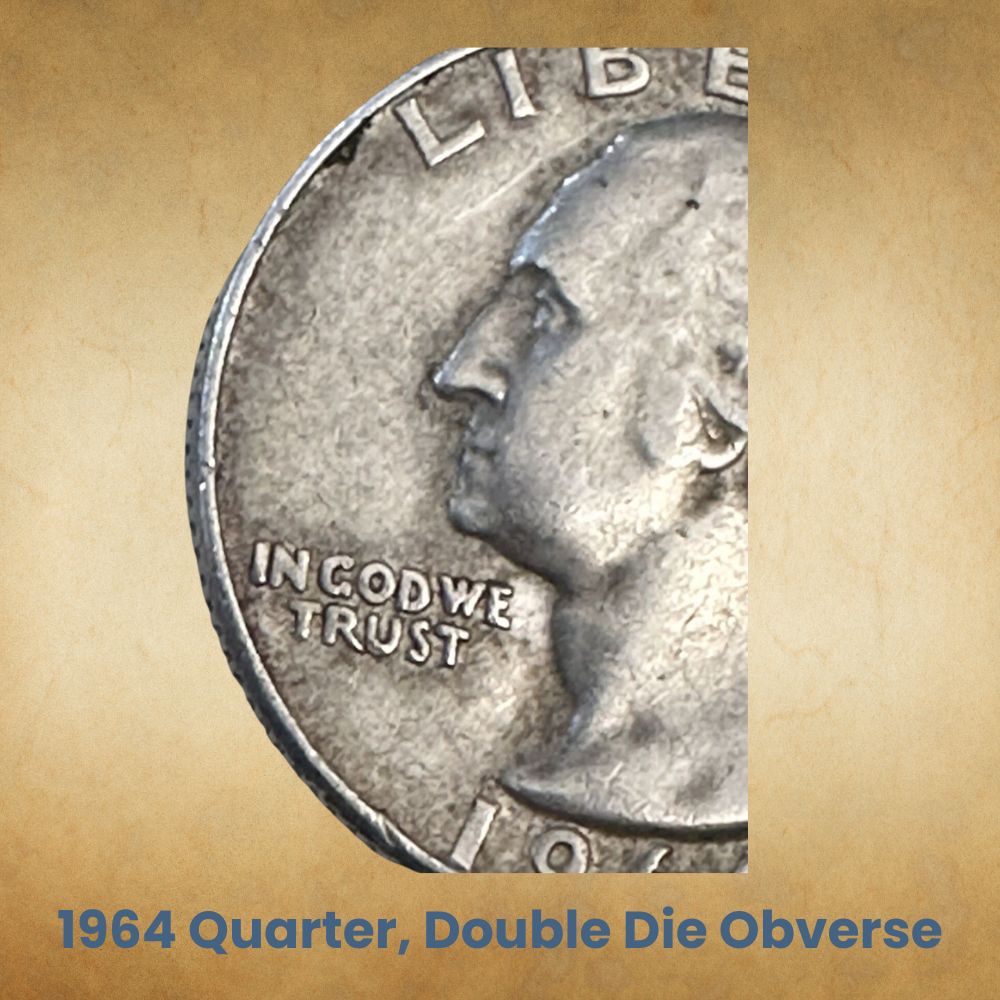
A number of different varieties of double die errors are known to exist amongst 1964 quarters. On the obverse, there’s only one variety. The doubling can be seen in the letters of the phrase “In God we trust”.
A 1964 quarter struck in Philadelphia with this error sold on online auction site eBay in 2018. It was graded MS64 and fetched $145. The highest known quality of this error coin is one point higher at MS65. Find one of these, and it will be worth about $250.
1964 Quarter, Double Die Reverse
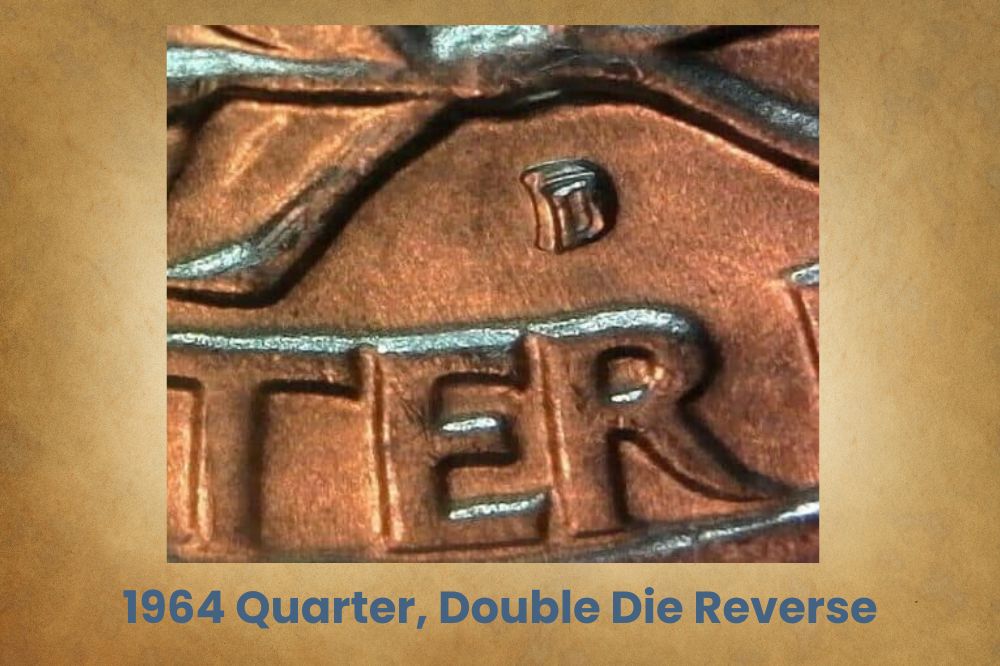
There are four different recognised double die errors on the reverse of 1964 coins. You can tell them apart in sale listings by their die code numbers, FS-801, FS-802, FS-803 and FS-804.
In circulated extremely fine condition, they’ll be worth between $40 and $50. But the FS-804 die pairing is worth $120 at the same grade.
Prices for gem quality coins are much higher. Examples graded MS65 are worth between $650 and $2,000 depending on the variety.
1964 Quarter, Type B Reverse
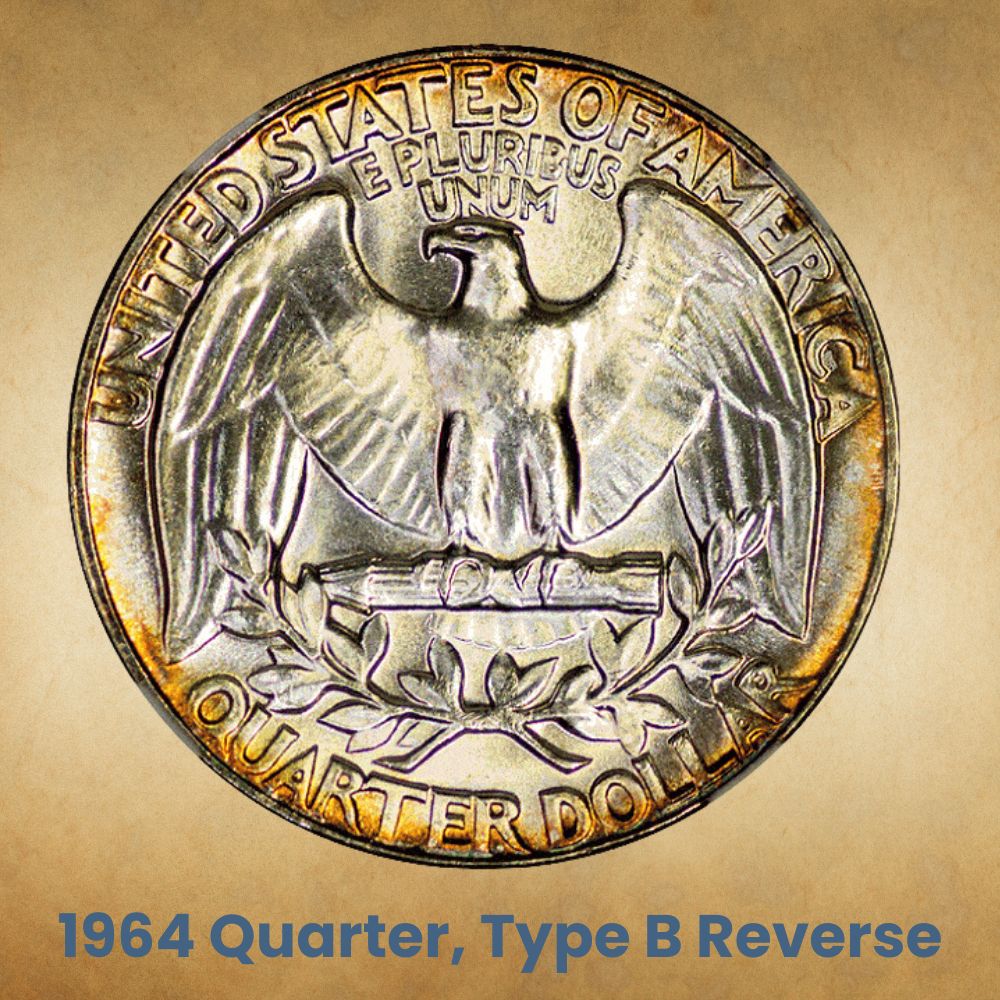
The Type B reverse is one that was used in error, having been intended for proof coins. It can be spotted by looking at the letters “E” and the “S” at the end of “States”. In a Type B coin, unlike the standard (or “Type A” variety), there’s a clear gap between the two letters.
An example of a 1964 quarter with a Type B reverse graded MS63 is worth about $26. At MS65, that value increases to about $110.
1964 D Quarter with 1965 Reverse
1965 saw changes to the design on the reverse of the Washington quarter. It also saw the silver coins replaced with a copper coin clad in copper and nickel.
That transition led to another type of error: some coins being struck with the 1964 obverse and the 1965 reverse. This is sometimes referred to as the Type C reverse.
This type of error is rare. A coin like this, graded MS65, sold on eBay in 2018 for $271. And another specimen, graded MS66, sold in 2014 for $2,350.
This YouTube video from Couch Collectibles looks at different errors in 1964 quarters.
Related Posts: 16 Most Valuable Quarter Errors
History of the 1964 Quarter
The quarter as a denomination was first minted in 1796. And since 1831, it has been a consistent part of the nation’s coinage.
The idea of a quarter came from Spanish coins. In the eighteenth century, Spanish dollars were regular divided into eight slices – the “pieces of eight” well-known from pirate stories.
To this day, a quarter is sometimes referred to as “two bits”. The expression refers back to its value as two pieces of eight.
Various designs have been used for the quarter through the years. Many bore the image of Lady Liberty. But 1932, the bicentenary of George Washington’s birth, saw the first quarters produced with his image. They proved popular with the public, and the design remained the same until 1965.
It was the rising price of silver that finally brought changes. The quarter was made of 90 per cent silver, and members of the public were increasingly hoarding the coins.
To begin with, the Treasury responded by increasing supply, in the hope this would stop the hoarding. Coins marked 1964 continued to be produced into 1965. But the production depleted the Treasury’s reserves of silver. And silver prices continued to rise.
As a result, the composition of the coins was changed. The 90 per cent silver quarters were replaced by quarters with a copper core and a cladding of copper and nickel. All quarters dated 1965 were made from this new combination of metals.
Related Posts: Top 10 Most Valuable Bicentennial Quarters Worth Money
How to identify 1964 Quarter?
The Obverse of the 1964 Quarter
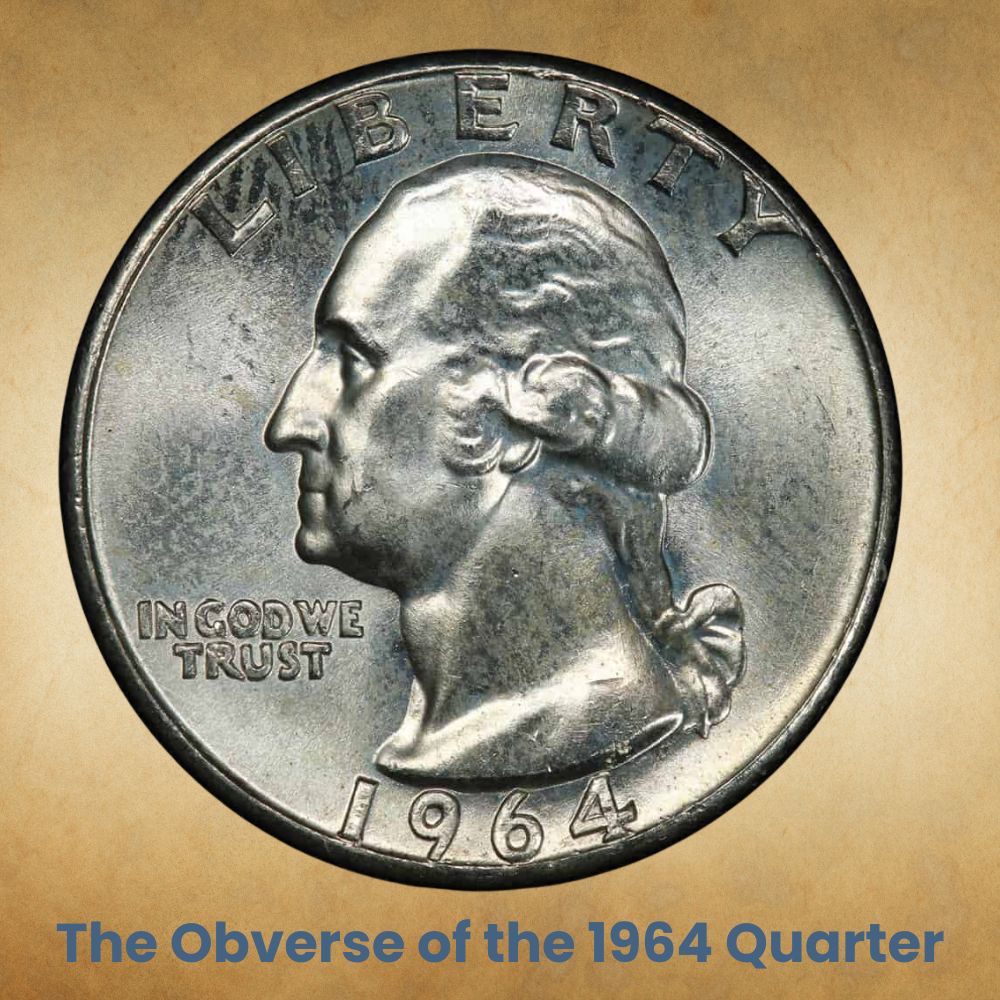
The portrait of Washington which appears on the obverse of the 1964 quarter was sculpted by John Flanagan. The choice of Flanagan’s portrait, however, was controversial.
It had originally been proposed to mint a half-dollar to celebrate Washington’s bicentenary. A design competition was held. The Bicentennial Committee and Fine Arts Commission reviewed the entries and recommended a design by Laura Gardin Fraser.
But it was later decided that the commemorative coin should be a quarter instead. And the Treasury decided to hold a new design competition. It specified that the design should be based on the bust of Washington sculpted in 1785 by Jean-Antoine Houdon.
The bust was based on a mask made from plaster of Paris that had been applied to Washington’s face. It was generally considered the best representations of the former president, and had already been used for various medals. Laura Fraser had also based her portrait on it.
Once again, the Fine Arts Commission recommended Laura Fraser’s design. But the Secretary of the Treasury, Andrew W. Mellon, unexpectedly disagreed and selected Flanagan’s portrait instead.
Despite various attempts to persuade him to think again, he remained firm. And when he was succeeded in office by Ogden L. Mills, Mills declined to reopen the matter.
In Flanagan’s portrait, Washington faces left. The design was well suited to coins. Because it was in low relief, it was easy for the dies to achieve a clear strike.
Above Washington’s head curves the word “Liberty”. The date curves around the lower edge of the coin. And the motto “In God we trust” sits to the left of Washington’s bust, just below his chin.
The Reverse of the 1964 Quarter
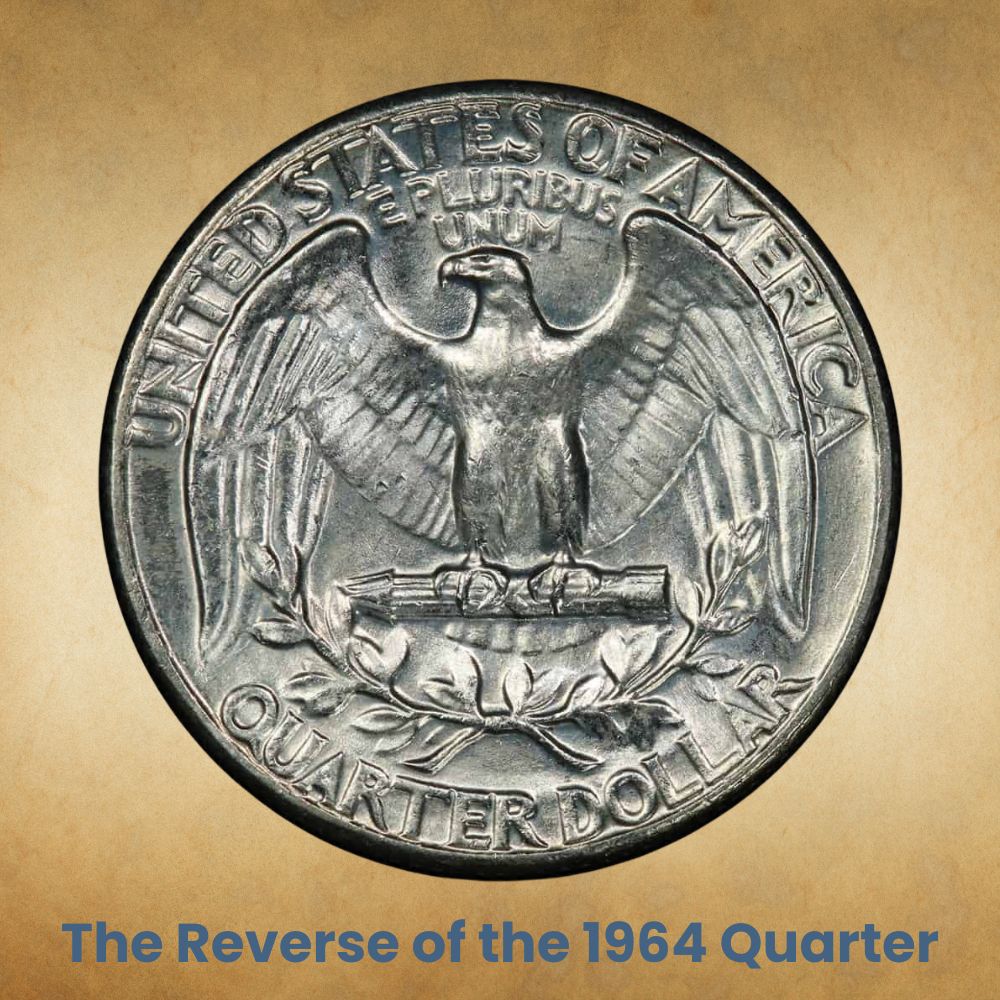
The reverse of the coin was also designed by Flanagan. It shows an eagle with its wings outstretched, perched on a bundle of arrows. Beneath it, two olive branches curve upwards.
The denomination “Quarter dollar” appears at the bottom of the reverse, curving around the edge. This is mirrored by a curving “United States of America” at the top.
Beneath that, written on the horizontal, is the Latin motto “E pluribus unum”. It means “from the many, one”, and refers to the union of the states.
Other Features of the 1964 Quarter
The key feature that distinguishes the 1964 quarter from modern examples is its composition. Coins made in 1964 were made of 90 per cent silver. After that, standard quarters were made from a combination of copper and nickel.
This YouTube video from BigDCoins shows the difference between the 1964 and 1965 quarters.
1964 saw quarters being minted at both Philadelphia and Denver. Those struck in Philadelphia don’t have a mint mark, but those from Denver have a “D” on the reverse. Look for it beneath the center of the olive branches.
Turn the coin on its side, and you’ll see that it has a series of grooves which run perpendicular to the coin faces. This is called a “reeded edge”, and it originated towards the end of the eighteenth century. It was intended to prevent slivers of metal being clipped from the edges of gold or silver coins.
Related Posts: 20 Most Valuable State Quarters Worth Money
FAQs
What makes a 1964 quarter rare?
Most circulated 1964 quarters aren’t particularly rare. The coins minted in Philadelphia are slightly rarer than those from Denver – but both are still widely available.
Rarer, though, are coins of the best quality, those graded MS65 and above. There are also a number of interesting error coins that are considerably harder to find. And perhaps rarest of all are the 1964 quarters produced for Special Mint Sets.
How much is a 1964 quarter worth?
A 1964 quarter will always have some value associated with its silver content. That will vary over time, but you can usually pick up a standard 1964 quarter in extremely fine condition for about $6. At MS67, such coins will be worth several hundred dollars.
Proof 1964 quarters aren’t particularly valuable unless they’re the best possible quality. Decent examples can sell for anything from $10 to $30. But if you have a proof with a perfect grading of PR70, or one graded PR69 with a “deep cameo” designation, it’ll be worth around $1,000.
Error coins can be worth anything from tens to thousands of dollars, depending on their quality. Amongst the most valuable is the transition error – the 1964 obverse with the 1965 clad reverse. At MS66, that’s worth well over $2,000.
And if you find a 1964 quarter from a Special Mint Set, you’ve hit the jackpot. At SP67, that will be worth $13,000, and at SP68, a massive $25,000.
Related Posts: 21 Most Valuable Quarters In Circulation

I have around 15 1964 Silver quarters that are in near perfect condition. Just curious if it would be worth having graded?
I have 4 1964 quarters 2 without a mint mark and 2 with the d on the back of the quarter how much is it worth